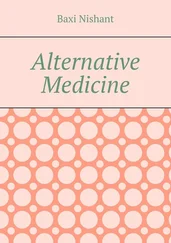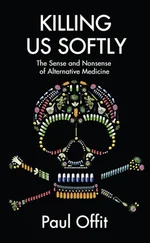Conclusion
Many lifestyle recommendations of naturopaths are valuable, but a general judgement about the wide variety of naturopathic treatments is not possible. Each naturopathic treatment must be critically assessed on its own merits, and it is likely to be covered elsewhere in this appendix. For any serious condition, naturopathy should not be seen as an alternative to conventional medicine.
Neural Therapy
The diagnostic and therapeutic approach of using injections with local anaesthetics for the identification of health problems, treatment of diseases and alleviation of symptoms.
Background
The brothers Ferdinand and Walter Huneke were German doctors who practised during the first half of the twentieth century. They made observations regarding the local anaesthetic Novocain which led them to become convinced that injecting this drug around a ‘field of disturbance’ ( Störfeld ) generates dramatic effects in other parts of the body. This, they postulated, has nothing to do with the pharmacological action of the local anaesthetic, but is mediated through the autonomic nervous system.
One key event, for instance, was when Huneke injected Novocain into the skin around a leg wound of a patient who then was cured of an old shoulder pain within seconds. This type of observation was coined Sekundenphänomen (phenomenon of a cure within seconds).
The brothers Huneke claimed the ‘fields of disturbance’, often old scars, injuries or sites of inflammation, can exert strong influences throughout the body which in turn can cause problems in distant body structures. Treating a particular problem may involve injecting Novocain or other local anaesthetics into one or two sites that may be ‘fields of disturbance’. When the correct site is located, the problem is cured.
Neural therapy is particularly popular in German-speaking countries. There are also many practitioners in the Spanish-speaking world, largely thanks to its promotion in the 1950s by a German-Spanish dentist called Ernesto Adler.
What is the evidence?
Injecting local anaesthetics into an area of pain will reduce that pain — but that is a predictable pharmacological effect and not what neural therapy is about. The concepts of neural therapy have little grounding in science, and the few clinical trials that exist have not produced any convincing evidence to support neural therapy. Occasionally, the local anaesthetic drug can cause adverse reactions, but such incidents are rare.
Conclusion
Although the injection of local anaesthetics as performed by many doctors can control pain, neural therapy is biologically implausible and is not backed up by sound evidence.
Orthomolecular Medicine
The use of substances in high and specific doses which are natural constituents of the human body for the prevention and treatment of a range of conditions, including serious diseases such as cancer.
Background
‘Orth’ means correct, and orthomolecular medicine (also known as optimum nutrition) means administering doses of vitamins, minerals and other natural substances at levels that have to be exactly right for the individual patient. Proponents of this approach believe that low levels of these substances cause chronic problems which go beyond straightforward mineral or vitamin deficiency. These problems include a tendency to suffer from infections such as the common cold, lack of energy or even cancer. This means each patient is initially assessed to determine precisely which substances he or she needs. Subsequently the ‘correct’ mixture is prescribed. The hallmarks of orthomolecular medicine are the extremely high doses that are usually suggested and the individualization of the prescription.
What is the evidence?
Some of the diagnostic methods that are being used for defining the right mixture of substances are not of proven validity. For instance, hair analysis is often employed, yet it generates spurious results in this context. The medicinal claims made are neither plausible nor supported by data from clinical trials. Thus there is no evidence that orthomolecular medicine is effective.
Proponents would strongly dispute this statement and refer to a plethora of studies that show the efficacy of vitamins. After all, vitamins are substances that are vital for humans — without them we cannot survive. However, our normal diet usually provides sufficient vitamins and the treatment of vitamin deficiencies is unrelated to the specific principles of orthomolecular medicine.
In excessive doses, vitamins can cause harm. Virtually all of these substances will cause adverse effects if grossly overdosed over prolonged periods of time — and this is precisely what is recommended by proponents of orthomolecular medicine.
Conclusion
The concepts of orthomolecular medicine are not biologically plausible and not supported by the results of rigorous clinical trials. These problems are compounded by the fact that orthomolecular medicine can cause harm and is often very expensive.
Osteopathy
A manual therapy involving a range of techniques, particularly mobilization of soft tissues, bones and joints. Osteopaths focus on the musculoskeletal system in treating health and disease.
Background
The American Andrew Taylor Still founded osteopathy in 1874 — around the time when chiropractic therapy (see Chapter 4) was created by D. D. Palmer. Osteopathy and chiropractic therapy have much in common, but there are also important differences. Osteopaths tend to use gentler techniques and often employ massage-like treatments. They also place less emphasis on the spine than chiropractors, and they rarely move the vertebral joints beyond their physical range of motion, as chiropractors tend to do. Therefore osteopathic interventions are burdened with less risk of injury.
In the US, doctors of osteopathy (DOs) are entirely mainstream and only rarely practise manual therapies. In the UK, osteopaths are regulated by statute but considered to be complementary/alternative practitioners. British osteopaths treat mostly musculoskeletal problems, but many also claim to treat other conditions such as asthma, ear infection and colic.
What is the evidence?
There is reasonably good evidence that the osteopathic approach of mobilization is as effective (or ineffective) as conventional treatments for back pain. For all other indications, the data are not conclusive. In particular, the overall conclusion from several clinical trials is that there is no good evidence to support the use of osteopathy in non-musculoskeletal conditions.
Because their techniques are generally much gentler than those of chiropractors, osteopaths cause adverse effects much less frequently. Nevertheless, people with severe osteoporosis, bone cancer, infections of the bone or bleeding problems should confirm with the osteopath that they will not receive forceful manual treatments.
Conclusion
The evidence that the osteopathic approach is effective for treating back pain is reasonably sound. If, however, you receive no significant benefit then be prepared to switch to physiotherapeutic exercise, which is backed by similar evidence and which can be done in groups and therefore is more cost-effective. There is no evidence to support osteopathy for the treatment of non-musculoskeletal conditions.
Oxygen Therapy
The direct or indirect application of oxygen (O 2 ) or ozone (O 3 ) to the human body to treat a range of conditions, including serious diseases such as cancer.
Читать дальше











